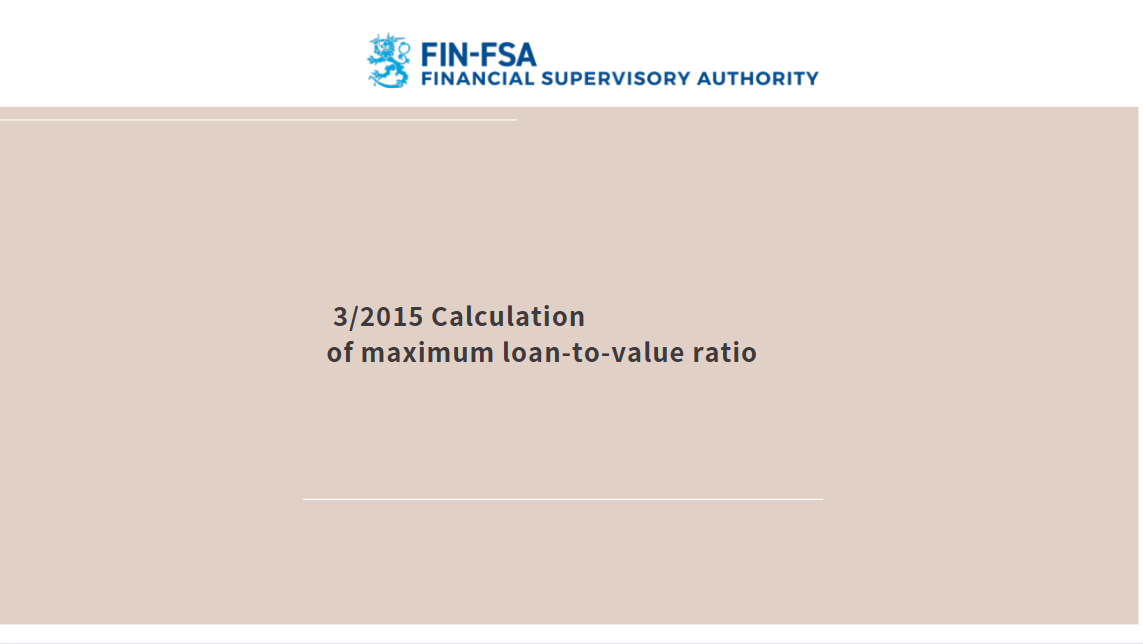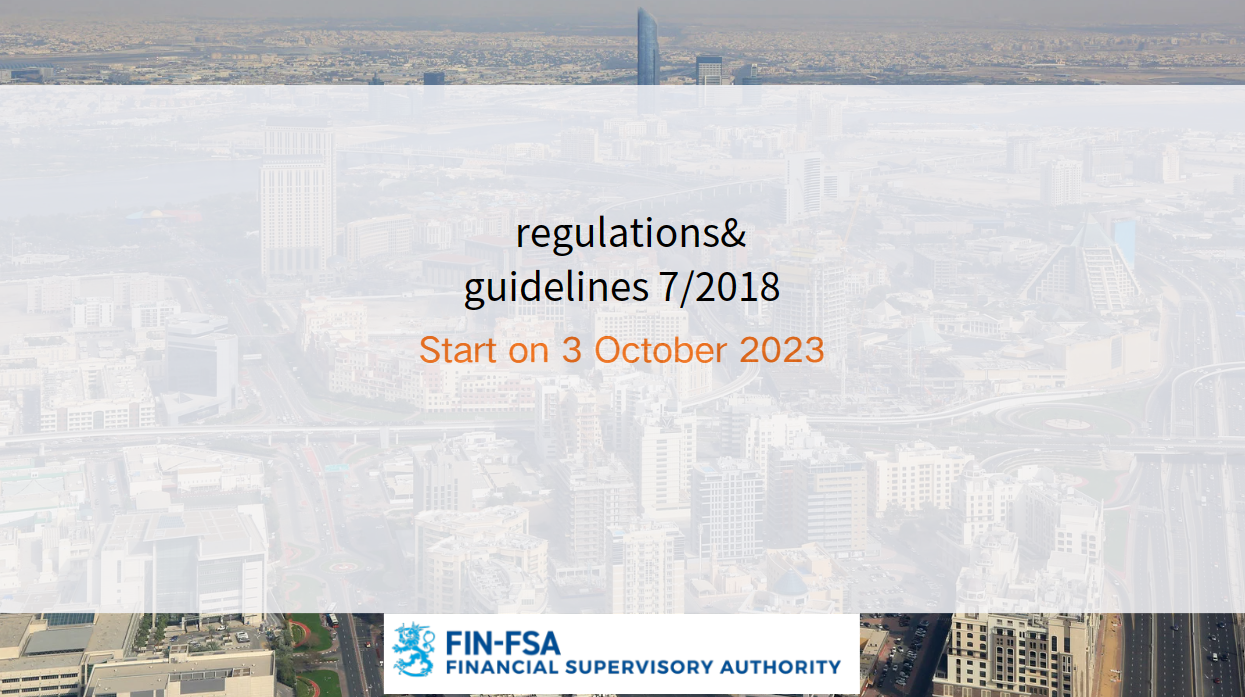Financial sector's capital position as at 31 March 2023: The Finnish financial sector's capital position has remained good - risks in the operating environment still high
The Finnish financial sector's capital position remained good in the first quarter of 2023. The operating environment continued to be overshadowed by many familiar risks, such as the rapid rise in interest rates, high inflation and weaker economic growth, but there are also positive signs. The economy has been more resilient than expected and the feared energy crisis did not materialise. Despite the concerns related to the global banking sector, some segments of the equity markets, too, have developed positively compared with the turn of the year.
“The early months of the year were stable in the Finnish financial markets. It is important that the capital and liquidity positions of the financial sector remain strong. The uncertain operating environment underlines the importance of strong risk management, in particular. There are unfortunately some signs of a rise in credit risks both in household and corporate loans, and the financial sector must therefore continue to prepare for possible loan losses,” says Tero Kurenmaa, Director General of the Financial Supervisory Authority (FIN-FSA).
Banking sector's capital position still solid - strong growth in net interest income, boosted by higher interest rates
Despite the higher risks in the operating environment, the banking sector’s capital position remained roughly unchanged in the first quarter of 2023. The sector's Common Equity Tier 1 (CET1) capital ratio was 17.1% (12/2022: 17.2%) and the total capital ratio was 20.5% (12/2022: 20.6%). The banking sector's operating result improved significantly compared to the corresponding period the previous year, boosted by the strong growth in net interest income. In addition to the growth in net interest income, the significantly stronger operating result was also partly explained by the modest operating result in the reference period, burdened by non-recurring charges.
The banking sector’s non-performing assets relative to the credit stock remained at a low level and among the lowest in Europe. Movements of loans between the stages of impairment are, however, signalling a growth in credit risks both in household and corporate loans. Housing company loans, too, are showing early signs of a rise in credit risks. Finnish banks’ liquidity position has remained solid, despite the market turbulence in the spring and the problems experienced by individual US and European crisis banks. Finnish banks’ dependence on market funding exposes them, however, to market disruptions and a rise in funding costs. The banking sector's liquidity ratios exceeded the statutory requirements.
Employee pension sector's solvency remained at the average level
The employee pension sector's solvency ratio declined slightly, to 126.8% (12/2022: 127.0%) as return on investment (1.6%) was slightly lower than the required rate of return (1.8%). In the early months of the year, the return on liquid investments, i.e. equity and fixed-income investments, was positive (3.0%). In contrast, the return on illiquid investments, i.e. real estate and private equity investments, was close to zero. Downside risks to the valuation of illiquid investments may, if materialised, weaken the sector’s solvency. The employee pension sector's capacity to bear risks related to negative value changes of investment assets is still stable and also resilient to significant write-downs of illiquid investments.
Non-life insurance companies’ solvency weakened, investments generated a positive return
The non-life insurance sector's solvency remained good. The solvency ratio was 284.7% (12/2022: 302.3%). The solvency position weakened compared to the record level at the end of 2022, due to the increase in the solvency capital requirement. The increase in the solvency capital requirement was attributable to higher market risk, as a result of the rise in the market prices of equities. Own funds were bolstered by return on investment but, on the other hand, growth in own funds was dampened by an increase in technical provisions, reflecting seasonal fluctuations.
The return on investment in January-March was 1.5%. All the investment classes generated a positive return. Insurance business profitability weakened as claims expenses increased more than premiums written. The increase in claims expenses was due to, for example, the growth in the number of frequency claims, and inflation. The amount of claims paid was largest in medical expenses, property and motor liability insurance.
Life insurance sector’s solvency remained strong
The life insurance sector’s solvency ratio was 256.9%, i.e at the same level as at the end of 2022. The higher value of investment assets increased the solvency capital requirement more than the amount of own funds. On the other hand, life insurance companies reduced their higher-risk investments, which in turn decreased the solvency capital requirement. The level of interest rates did not rise significantly in the first quarter of 2023, and therefore it did not have a large impact on changes in the solvency position.
The return on life insurance companies’ own investments was 1.6%. Both fixed-income and equity investments generated a profit again, after a year of losses in 2022, but the return on real estate investments was slightly negative. Premiums written decreased from the year earlier, but were still higher than the long-term average and exceeded the amount of claims paid.
Appendices
- Capital position of banking sector and financial and insurance conglomerates as at 31 March 2023 (Excel)
- Solvency position of life and non-life insurance companies as at 31 March 2023 (Excel)
- Solvency position of pension companies, pension funds and the employee pension sector as at 31 March 2023 (Excel)






















































First, please LoginComment After ~